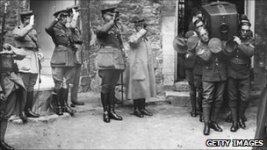BensGrandad
New member
Just caught a piece about it on The One show and saw my grandad, as he was the Sgt in charge of the party carrying the coffin. My mother gave the Royal Artillery museum a letter signed by Winston Churchill sent to his CO asking for permission for him to be let off duties to carry out the function.
Sorry for mis spelling in title but dont know how to edit it.
Sorry for mis spelling in title but dont know how to edit it.


